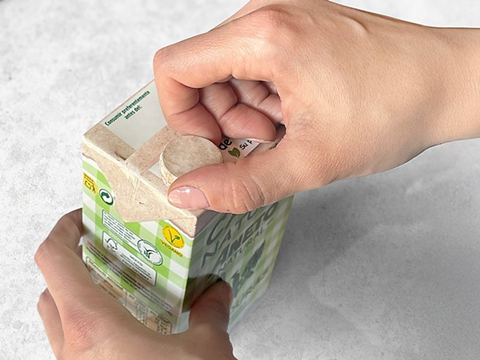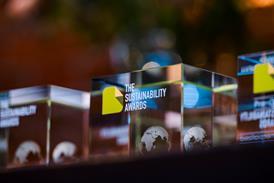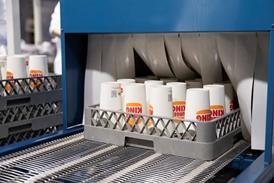
Tetra Pak is testing a paper-based cap for carton packages of Aneto’s vegetable broth – creating a pack that contains 73% paper by weight and, including the plant-based polymers in the coatings and opening neck, 87% renewable content.
Paperization is a growing trend in the packaging industry, with manufacturers seeking to improve recyclability by introducing components made of renewable, fibre-based materials. Tetra Pak states its intention to transition away from fossil-based plastics, simplifying the material structure and increasing paper-based content in its carton packages.
“We’re on a journey to deliver the world’s most sustainable food package,” says Aldo Fontana, global product manager at Tetra Pak. “That means a carton fully made from renewable or recycled materials, responsibly sourced to reduce environmental impact.
“It also means designing for circularity and ensuring a package is easily recyclable and offers a high yield of recycled materials.”
Aneto’s previous transition into sugarcane-based polymers for its caps and coatings, as well as the year-round demand for its vegetable broth, has led to its selection for a controlled test production of paper-based caps, which will be applied to an initial pilot batch of family packages in Spain.
This testing is expected to give Tetra Pak insight into the cap’s performance in real-world conditions. While the company reports that it has already evaluated the cap’s package integrity, material resilience, and recyclability in line with its standards and protocols, market testing is set to reveal whether the cap can resist moisture, temperature shifts, and stress in transit while preserving the broth’s quality.
“Creating a cap from paper isn’t as simple as swapping materials,” explains Pietro Martini, manager Solutions Scouting & Early Innovation. “It requires an entirely new approach to engineering, material science and production technology.
“This is not just a packaging tweak – it’s a vertical innovation. Paper is traditionally used for packaging, not closures. Adapting it for a cap changes everything, from raw material sourcing to supply chain adaptation, manufacturing and consumer interaction.
“That’s why it’s so important to test our innovations so we can see what consumers think of it and get data on how it performs before we move toward industrialisation and full-scale production.
“One of our top priorities is ensuring that the cap meets the same performance standards as plastic caps. It has to be easy to open, resealable, and durable.
“As with any new innovation, production needs to scale over time. As we refine the process and optimise manufacturing, the technology will become more accessible across the industry.”
“The test gives us an opportunity to see how consumers react,” Aldo continues, “and to make sure that what we’ve developed performs just as well as traditional caps.”
“Sustainability isn’t just a commitment for us – it’s a key part of our DNA and brand identity,” comments Joaquim Jiménez Santamaria, CEO and managing Director at Aneto Natural. “We were among the first brands in Spain to use plant-based packaging, and we’re always looking for ways to reduce our environmental impact.
“We’re always open to testing innovations that align with our values. We want to lead in sustainability while giving our customers the best possible experience.”
Tetra Pak cites statistics suggesting that 21% of consumers want packaging made only from renewable materials, while 31% of consumers say they would recycle more cartons if they were made entirely out of paperboard.
“Consumers now see cartons as the most environmentally sound beverage packaging,” Aldo adds. “The paper-based cap builds on this momentum and supports our goal of maximising paper content in our solutions – while maintaining functionality and making the transition smooth for both food and beverage producers and consumers.”
Tetra Pak points to its work alongside Nissha Metallizing Solutions to replace the aluminium foil layer in aseptic beverage cartons with a paper-based barrier from FSC-certified sources, which is expected to boost the share of paper content to around 80%.
If this solution is combined with plant-based polymers derived from sugarcane, it is believed to help reduce the carbon footprint of aseptic food packaging by up to 33%.
The introduction of a paper-based cap is expected to increase this figure, but Tetra Pak emphasizes the careful balance of package integrity, product line compatibility, and functionality for consumers.
“The trend toward paper-based packaging is accelerating,” Aldo concludes. “Every step makes a difference and helps move us closer to a low-carbon, fully renewable package. We sell more than 16 billion carton packages with caps in the EU alone. So, imagine the impact on plastic reduction if even a fraction of these transitioned to paper-based caps.”
Other recent developments from Tetra Pak include offering packaging materials with 5% ISCC PLUS certified recycled polymers to India’s food and beverage packaging industry, aligning with the recently updated Plastic Waste Management Rules; and its partnership with Schoeller Allibert to produce a transport crate made of polyAl from used beverage cartons.
Elsewhere in the fibre-based cap space, Wimbée and Koehler Paper, part of the Koehler Group, have topped aerosol cans like Héritage’s O’Cedar furniture care products with a paper-coated cardboard cap. This is anticipated to offer customers improved recyclability over conventional plastic caps while providing ‘excellent’ laminating, shaping, and printing properties.
If you liked this story, you might also enjoy:
The ultimate guide to the Packaging and Packaging Waste Regulation in 2025
How are the top brands progressing on packaging sustainability?
Everything you need to know about global packaging sustainability regulation in 2025
The key to increasing the use of reusable packaging in supermarkets





















No comments yet